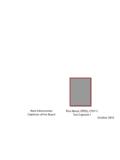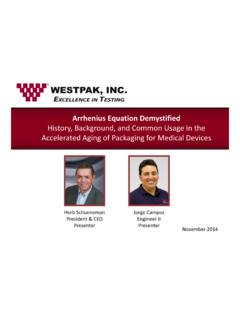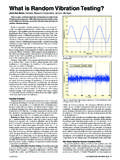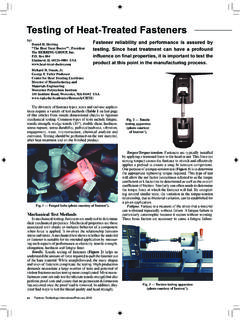Transcription of CUSHION MATERIAL TESTING - Package Testing, …
1 CUSHION MATERIAL TESTING PREPARED BY HERBERT H. SCHUENEMAN, CP-P/MH PRESENTED BY WESTPAK, INC. 83 Great Oaks Blvd., San Jose, CA 95119 (408) 224-1300 FAX (408) 224-5113 I. CUSHION MATERIAL TESTING The ability of various materials to mitigate shock and vibration input is an important characteristic to the packaging engineer. It is necessary to know exactly what to expect when using certain materials in a particular design situation. SHOCK PERFORMANCE The shock performance of CUSHION materials is measured using instrumented impacts resulting in a CUSHION curve such as that shown in Figure 1.
2 The CUSHION curve describes the level of deceleration transmitted through a given thickness of MATERIAL as a function of static stress (loading) on the CUSHION and the drop height. Procedures for running a CUSHION curve are covered by ASTM D1596, D4168, and similar MIL Specs. They are basically a matter of dropping a guided platen of predetermined mass onto a CUSHION of known thickness and area from a given drop height. The amount of deceleration transmitted through the CUSHION is measured by an accelerometer mounted on the platen or test block.
3 The results are displayed on an oscilloscope or similar readout device. The procedure results in CUSHION curves, such as those in Figure 1, with peak deceleration on the vertical axis and static stress on the horizontal axis (static stress = weight/bearing area). Each curve should be drawn from a minimum of 5 test points (static stress levels) and each test point is the average of the last 4 of 5 deceleration readings from the CUSHION MATERIAL . - 1 - STATIC STRESS g/cm^2 DECELERATION G02550751001251500102030405060708090100 AVG 2-5 DATAFIRST DROP DATAWESTPAK Figure 1 Sample CUSHION Curve 6 cm Drop Height Most CUSHION curves have the general shape of those in Figure 1.
4 The left-hand portion of the curve shows a relatively high deceleration transmitted through the CUSHION . In this area the static stress is relatively low because of the light weight on the CUSHION ; the object (the platen in the CUSHION test) does not have sufficient force to deflect the CUSHION and the result is a rigid or "stiff" impact. The effect resembles dropping a product onto a rigid surface. In the center portion of the curve (where the CUSHION is being used effectively), the falling object has sufficient force to deflect the CUSHION and cause the deceleration to be spread over a longer period of time.
5 The result is a lower deceleration level. On the right-hand portion of the curve, the CUSHION MATERIAL is being overloaded and the falling object continues right through the CUSHION (it bottoms out) and impacts with the surface on which the CUSHION is resting. Thus, it approaches using no CUSHION at all resulting in, once again, high deceleration levels. It is desirable to use the CUSHION in the lower portion of the curve where its performance is optimum. When the product critical acceleration, weight and design - 2 - drop height are known, the usable range of CUSHION area can be determined for a given CUSHION MATERIAL and thickness.
6 vibration PERFORMANCE The vibration performance characteristics of CUSHION materials are determined by subjecting them to vibrational inputs over the frequency range typical of the distribution environment. In this case, the CUSHION and a test block form a spring/mass system which displays resonant frequency characteristics important to the Package designer. Figure 2 shows two typical test setups and Figure 3 the transmissibility curve for a typical CUSHION MATERIAL . The mass of the test block is changed in order to vary the static stress loading on the CUSHION MATERIAL and the test is repeated.
7 Different plots are obtained in this fashion (see Figure 4). A series of 5 vibrational sweeps are recommended to construct the Amplification/Attenuation (A/A) plot shown in Figure 5. - 3 - MASSCUSHIONVIBRATION TABLEVIBRATION TABLECUSHIONMASSCUSHIONRESPONSEINPUTMASS ADHERED TO FOAMSO THAT THE "SPRING"( CUSHION ) WORKS IN BOTHTENSION AND COMPRESSIONMASS ISOLATED BETWEEN2 "SPRINGS" ( cushions )THAT WORK ONLYIN AMETHOD BACCELEROMETERACCELEROMETER Figure 2 Typical CUSHION vibration Test Setups FREQUENCY - HzRESPONSE/INPUT ACCELERATION Figure 3 CUSHION Resonant Frequency Plot (Transmissibility)
8 - 4 - FREQUENCY - HzRESPONSE/INPUT ACCELERATION The Amplification/Attenuation plot describes an area on a graph bounded by frequency on the vertical axis and static stress (loading) on the horizontal axis. The center portion is that combination of frequency and loading which results in BAC90703010 Loadingg/cm^250 Figure 4 Multiple Resonant Frequency Plots (Different CUSHION loadings) STATIC STRESS g/cm^2 FREQUENCY - Hz01020304050607080901001101200102030405 060708090100 CABAAAACCCCBBBBXUNITY ZONEAMPLIFICATION ZONEATTENUATION ZONEWESTPAK Figure 5 Amplification/Attenuation Plot - 5 - amplification of the vibrational input.
9 This is the area of greatest concern to the packaging engineer. The plot in Figure 5 may be interpreted as follows: for a given frequency, the lower static stress levels result in the same acceleration transmitted to the product as the input. In other words, the response/input ratio is approximately 1. As the static stress (loading) increases, there is a range in which the CUSHION MATERIAL amplifies the vibrational input. In this region the response/input ratio is greater than 1. At higher static stress levels, the CUSHION MATERIAL attenuates (reduces) the vibrational input and the response/input ratio is less than 1.
10 The producers and users of CUSHION materials should be familiar with CUSHION curves and Amplification/Attenuation plots both in terms of the data itself and how it is obtained. This is important. For example, information obtained from ASTM D1596 will likely be different from information obtained by use of other test methods such as the Enclosed Test Block method described in ASTM D4168 for TESTING of foam-in-place materials. A user of CUSHION materials should insist on shock and vibration data when considering a given MATERIAL in a Package design situation.













